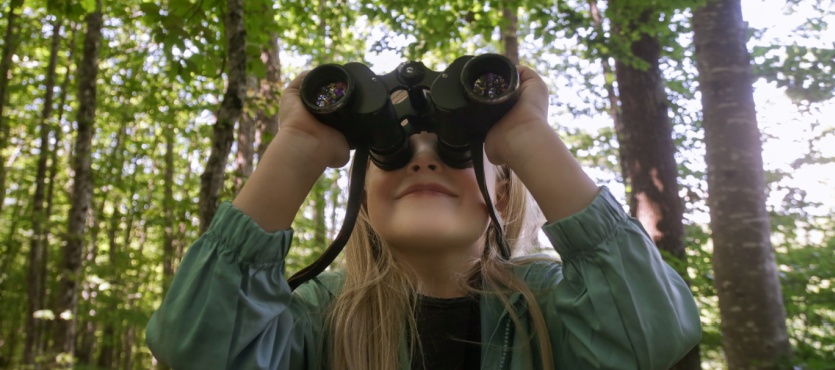Camping offers families a unique opportunity to step away from screens and schedules and reconnect with the natural world. One of the most rewarding ways to engage with nature—especially for children—is wildlife watching. Whether it’s spotting a chipmunk darting between trees, listening for owls after sunset, or marveling at a butterfly resting on a leaf, these small encounters can spark curiosity, excitement, and a lifelong love of the outdoors. If you’re planning a stay at a family-friendly campground like Campark, here’s how to make wildlife watching a fun and meaningful part of your camping adventure.
Start With a Nature Walk
The best way to introduce kids to wildlife watching is by simply taking a walk. Choose an easy trail around your campground and move slowly, encouraging your children to use all their senses. Ask them what they hear—birdsong, rustling leaves, or frog croaks—and what they see, from animal tracks to nests in the trees. Walking at a relaxed pace allows you to observe without disturbing the animals, making it easier to notice small signs of life all around you.
Even a short stroll can reveal hidden wildlife if you pay attention. At a place like Campark, nature is all around—along wooded paths, near water, or just off the beaten trail. Encourage kids to pause often and sit quietly. The longer you stay still, the more likely it is that animals will emerge.
Make It a Game
Kids learn best when they’re having fun, so turn wildlife watching into a game. Create a wildlife scavenger hunt with a list of things to find: a squirrel, a bird in flight, a bug on a tree, or a feather on the ground. Include items that rely on both sight and sound, like “an animal noise” or “a moving shadow.”
You can also play “I Spy” using clues that describe the color, movement, or sound of the wildlife. These games not only make the activity more exciting but also teach children to observe carefully and think critically about their environment.
Bring the Right Tools
You don’t need a lot of gear to watch wildlife, but a few simple tools can enhance the experience. A pair of kid-friendly binoculars allows children to get a closer look at birds, squirrels, or deer without disturbing them. A magnifying glass is perfect for examining insects, leaves, and tiny critters up close.
A notebook or nature journal is another great addition. Encourage kids to draw pictures of what they see, jot down animal behaviors, or track sightings by date and location. Not only does this reinforce memory and attention to detail, but it also creates a special keepsake from your camping trip.
Teach Respect for Wildlife
It’s essential to teach kids that observing animals is about respect, not interaction. Explain that wild animals need space to feel safe and that feeding or chasing them can be harmful. Use this as an opportunity to talk about being a good guest in nature—observing quietly, leaving no trash behind, and not touching nests or burrows.
Let your kids know it’s okay if they don’t see every animal on their list. Part of the joy of wildlife watching is learning to appreciate the quiet moments and understanding that animals appear on their own terms.
Focus on Local Wildlife
Before your trip, spend a little time learning about the animals commonly found in the region. In Niagara Falls, for instance, campers might spot white-tailed deer, raccoons, woodpeckers, rabbits, or even great horned owls. Knowing what to expect makes it easier to recognize animals when you see or hear them and gives kids something exciting to look forward to.
You can print out a simple wildlife guide or download a nature app designed for kids. These tools help with quick identification and can spark curiosity about habitats, diets, and behaviors.
Create a “Wildlife Watch” Time
Set aside a designated time each day for wildlife watching—early mornings and just before sunset are ideal, as many animals are more active during these hours. Bring along snacks, settle into a quiet spot, and let kids get comfortable with the idea of simply watching and listening. Even if they don’t spot anything big, they’ll start to notice the little things: a dragonfly gliding past, the rustle of leaves, or birds calling in the distance.
Making it a routine helps kids develop patience and observation skills and gives everyone a peaceful, shared experience away from distractions.
Turning Curiosity into Connection
Introducing your kids to wildlife watching is about more than just spotting animals—it’s about nurturing a sense of wonder, patience, and respect for the natural world. With the right approach, tools, and mindset, children can learn to appreciate nature in ways that last far beyond a single camping trip.
At family-focused campgrounds like Campark, where natural beauty and comfort come together, it’s easy to find moments of quiet awe. So pack your binoculars, bring your sense of curiosity, and get ready to explore the wild—one chirp, rustle, and pawprint at a time.


